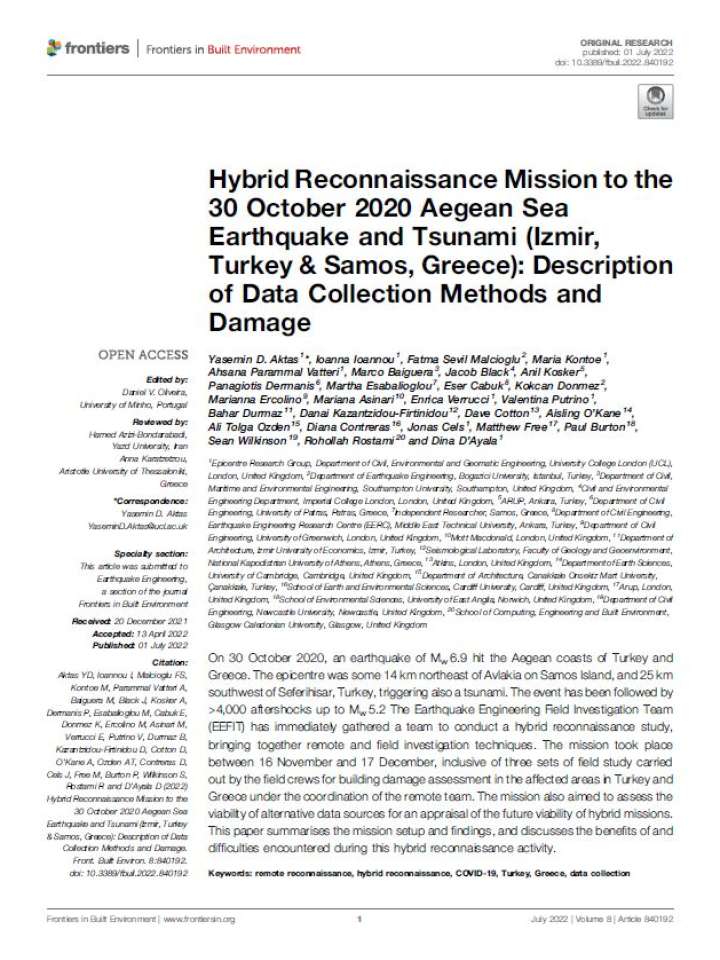Hybrid reconnaissance mission to the 30 October 2020 Aegean Sea earthquake and tsunami (Izmir, Turkey & Samos, Greece): description of data collection methods and damage
This paper summarises the findings of a mission that conducted damage assessment following an earthquake in Turkey and Greece in October 2020, which was followed by a tsunami. The epicentre was some 14 km northeast of Avlakia on Samos Island, and 25 km southwest of Seferihisar, Turkey, triggering also a tsunami. The event has been followed by >4,000 aftershocks up to Mw 5.2 The Earthquake Engineering Field Investigation Team (EEFIT) has immediately gathered a team to conduct a hybrid reconnaissance study, bringing together remote and field investigation techniques.
The EEFIT Mission showed that the building stocks in both countries generally performed well, with the exception of a few reinforced concrete (RC) structures exclusively in Turkey, which suffered from a high degree of damage despite the lower spectral accelerations than the design demand–a situation which can be attributed to a very unique combination of non-compliant design, poor construction practices, and in certain cases, post-occupancy amendments, flagging a lack of more operational quality assurance protocols. Additionally, the traditional building stock in Samos received mostly moderate- and high-damage, as a result of both the comparatively poor upkeep of these buildings.
Explore further

